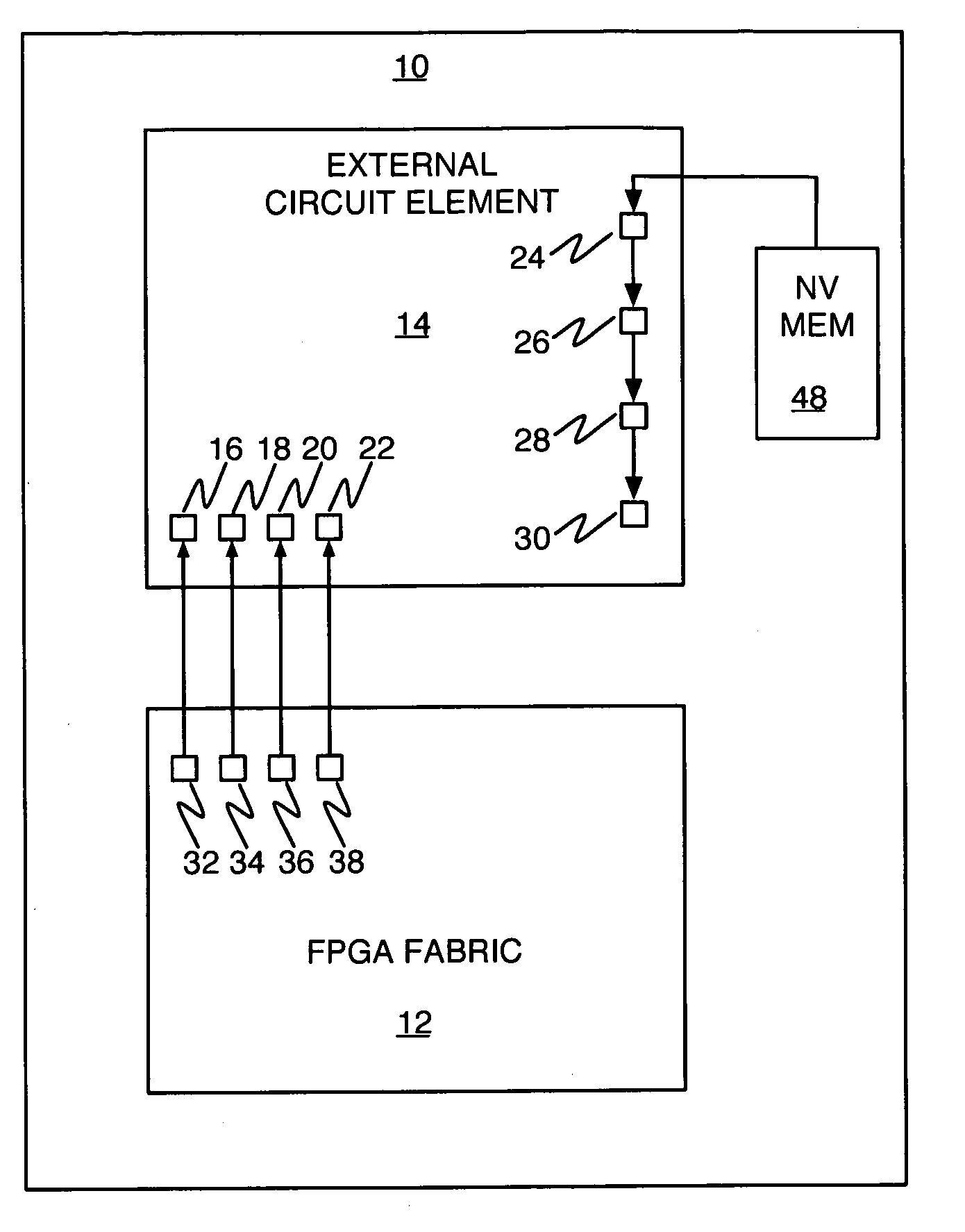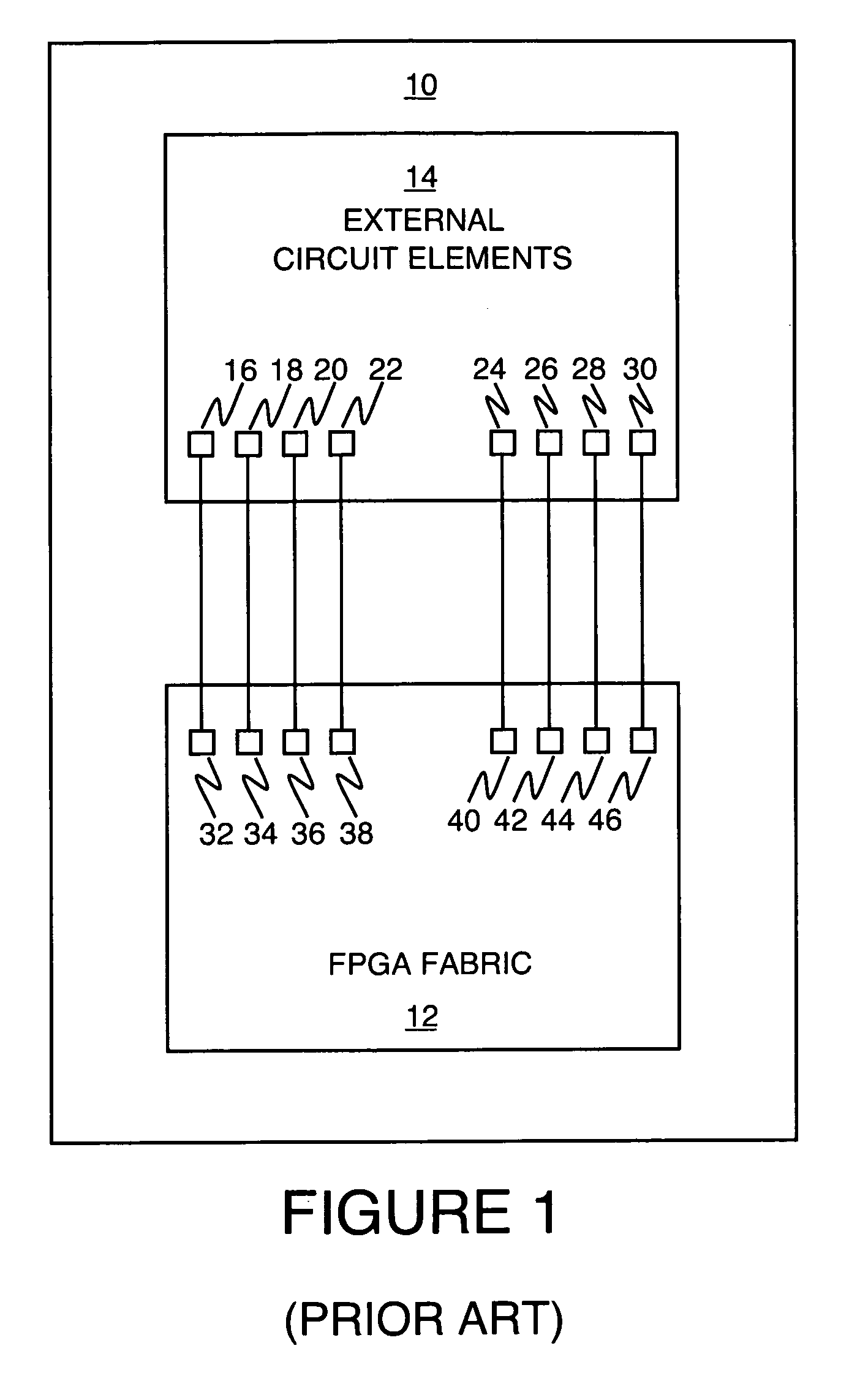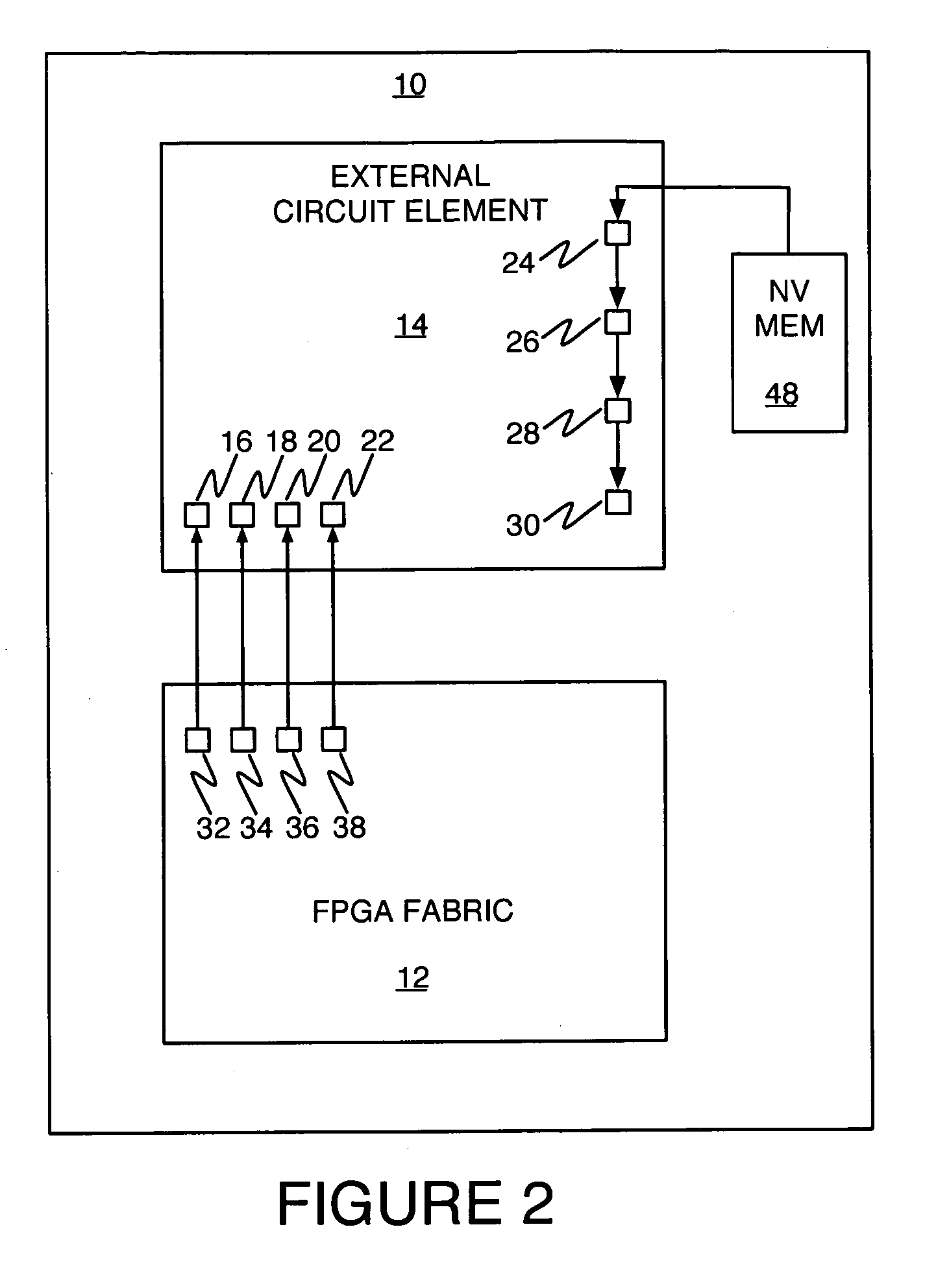Non-volatile memory configuration scheme for volatile-memory-based programmable circuits in an FPGA
a programmable circuit and volatile memory technology, applied in the field of integrated circuit technology, can solve the problems of not being able to efficiently route one signal, not having enough physical space or architectural bandwidth, and compromising the effective bandwidth of dynamic signals. the number of such conductors becomes unreasonably larg
- Summary
- Abstract
- Description
- Claims
- Application Information
AI Technical Summary
Benefits of technology
Problems solved by technology
Method used
Image
Examples
Embodiment Construction
[0015]Those of ordinary skill in the art will realize that the following description of the present invention is illustrative only and not in any way limiting. Other embodiments of the invention will readily suggest themselves to such skilled persons.
[0016]Referring now to FIG. 2, a block diagram presents an illustrative arrangement for configuring circuit elements external to an FPGA fabric in an integrated circuit according to the principles of the present invention. As in the circuit arrangement of FIG. 1, the arrangement of FIG. 2 shows an integrated circuit 10 including an FPGA fabric 12 and a group of external configurable circuit elements 14. As in FIG. 1, representative ones of such configurable circuit elements are represented by small squares 16, 18, 20, 22, 24, 26, 28, and 30.
[0017]The configurable circuit elements 16, 18, 20, and 22 are shown in FIG. 2 as being controlled, respectively, by configuration bits 32, 34, 36, and 38, distributed throughout the FPGA fabric 12. ...
PUM
 Login to View More
Login to View More Abstract
Description
Claims
Application Information
 Login to View More
Login to View More - R&D
- Intellectual Property
- Life Sciences
- Materials
- Tech Scout
- Unparalleled Data Quality
- Higher Quality Content
- 60% Fewer Hallucinations
Browse by: Latest US Patents, China's latest patents, Technical Efficacy Thesaurus, Application Domain, Technology Topic, Popular Technical Reports.
© 2025 PatSnap. All rights reserved.Legal|Privacy policy|Modern Slavery Act Transparency Statement|Sitemap|About US| Contact US: help@patsnap.com



